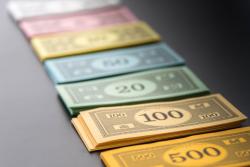
Those who know me best know that I love a good question. I especially enjoy questions that at first glance seem straightforward but when explored further reveal a much more complicated set of circumstances. What is love? What is beauty? What is reality? We all think we have a basic understanding of these concepts but when examined through the philosopher’s lens we start to question what we really know. And that is a good thing by the way! Socrates said true wisdom comes to us only when we admit how little we know about ourselves, each other, and the world around us.
Naturally, because of my profession, I am attracted to fundamental questions surrounding finance and economics. The answers to these questions tend to evolve over time as technology continues to alter how our society interacts; this economical interaction occurs mostly through the use of currency. The concept of money itself has changed overtime and the story of its evolution is important to understanding where we are today. So, what is money? Money has existed at least as long as written history, and over most of that time it has been considered a commodity. The classical theory holds that money serves three functions: (1) it acts as a medium of exchange, (2) a unit of account, and (3) a store of value. These concepts date all the way back to Ancient Greece and Aristotle. But over the last 100 years or so the third function has not been present. Money is not a store of value, its value or purchasing power now decreases over time; this phenomenon is referred to as inflation. If money does not hold its value, then how accurate can it be as a unit of account? And if it can’t be used as a unit of account, how useful is it as a medium of exchange?
The second, and more recent, theory of money claims that currency is an abstract social construction rather than a commodity. This credit theory of money is based on the relationship between creditor and debtor. The theory was first postulated in the 19th century when sovereign nations first started experimenting with fiat money (currency not backed by gold). Today almost all industrial nations’ monetary systems operate this way, and it has turned our currency into something of an enigma. Money today is less of a thing and more of an idea.
The obvious problem with fiat currency is that if the “printing presses” get out of control and the supply of money increase too fast you are left with unwanted inflation. However, with the commodity theory of money the opposite can happen. If a population increases and the money supply does not, then you are left with fewer dollars to go around. It is a bit like an economical game of musical chairs. At the end of the day there is no easy way to manage a countries money supply. It will always be fraught with booms, busts and political challenges.